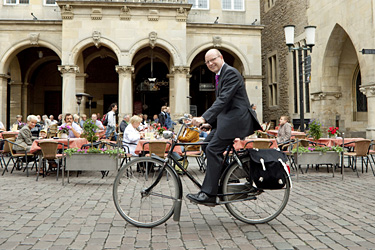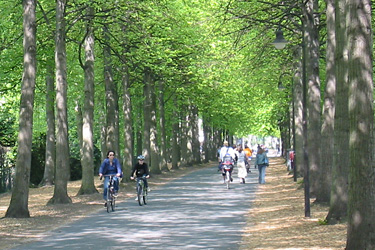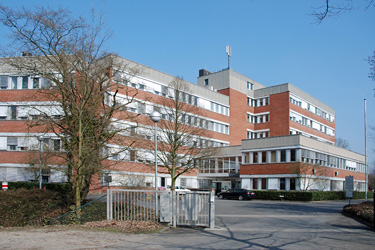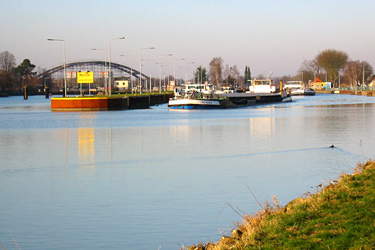Additional excursion no. 2: A tour of Münster by bike







Münster is a haven for everyone who enjoys going by bike. This is not just because the people of Münster use several terms for the word bike in everyday conversations, e.g., “Leeze“, but also because the city has been awarded the title “Fahrradhauptstadt Deutschland“, which means that it is the most popular city among bicyclists who may choose between a large number of well-developed cycle tracks. This is also because the biggest parking garage in Münster has been built for bikes only. There are people who go to their own wedding by bike, the cops go on patrol by bike and both politicians and bishops go to work by bike. Facts and figures prove that more than 37 % of all trips across the city of Münster are made by bike. There have been several reasons for the development of such a great infrastructure for bicyclists and for the rising popularity of bikes. One of the reasons could be the fact that they are the most cheapest and convenient option to cross the city centre. Münster’s promenade is a unique circular road reserved to bikes and pedestrians only and encircles the historic downtown area. Several important institutions, such as the university, fortress, central train station with the biggest bike station in Germany (3,300 parking spaces for bikes) and the lake Aasee in the southwestern part of Münster, which serves as the central recreational area, are all situated close to the promenade.
A bike trip across the most popular city among bicyclists in Germany is an exciting adventure. Do not miss this great opportunity and visit Münster’s sights and landmarks by bike. Travel just like 300,000 other people through a city that is estimated to contain an amazing 500,000 bikes. Our tour starts at the central train station and leads across the promenade into the northern boroughs of Münster. The 18th century promenade was constructed on the grounds of the ancient city walls. It forms a closed green circle that is lined with trees and separates the downtown area from the surrounding urban districts.
Before arriving at the Agricultural Chamber of North Rhine-Westphalia, we are going to travel across the old city district “Kreuzviertel“ and the northern park “Wienburgpark” until finally reaching the area “Nevinghoff”. Here, we are going to visit the LUFA of the Agricultural Chamber of North Rhine-Westphalia and we will stop for a lunch break. After filling our stomachs, we are going to ride along the banks of the water channel “Dortmund-Ems Kanal”, passing the harbour and travelling back to the city centre. Münster’s city harbour used to be a central trading point for shipped goods and changed into a hip spot for creative professionals. Office buildings, art, culture, restaurants and night clubs attract masses of people and ensure lots of fun at any time.
Schillerstraße – for bikes only
Afterwards, we are going proceed to “Schillerstraße” on our way to the central train station. In 1990, the city of Münster declared that the traffic on the street “Schillerstraße” was no longer permitted for motorized vehicles. This plan was part of the pilot project "Fahrradfreundliche Städte und Gemeinden in Nordrhein-Westfalen" (bike-friendly infrastructures for the cities and communities of North Rhine-Westphalia). Bike streets are narrow lanes in residential areas, where motorized vehicles must yield to bikes at any time. However, cars and motorcycles are generally permitted in Münster. The “Schillerstraße“ connects two main roads and is located in a residential area with a speed limit of 30 kph.
Bike station and central train station
The bike station will be the final destination of our city tour. It is the biggest bike station in Germany and was inaugurated in July 1999. It houses 3,300 parking spaces for bicycles. Approximately 95 % of all users arrive and depart via train. The distance between the train platforms and the bike station is not more than 50 metres. Commuters can quickly jump on their bikes and have them securely and safely parked. Services include a repair shop, bike wash, bike rental and luggage compartments.
Guides: Stefan Bohres, Holger Dietzsch, Helmut Janocha, Agricultural Chamber of North Rhine-Westphalia


 De
De